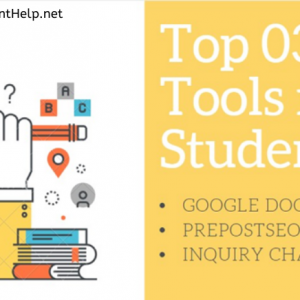Creating a model to detect malware using supervised learning algorithms
Background
N00BIoT Email Sentry 2.0
N00BIoT’s Email Sentry is a malware detection platform. The first version of Email Sentry wasn’t particularly effective, so the N00BIoT commissioned you as an expert in machine learning. An early phase of the project used principal component analysis to determine if there were specific factors about emails that could help to identify malicious emails. Based on this the N00BIoT software team tried to further refine their malware classification system. The results were still underwhelming. The decision has been made to explore further supervised learning models to create a more effective malware classifier.
MalwareSamples Data
The programming team has again provided you with email data. Two sets of data are provided to help with your investigation of the accuracy of various supervised learning models. The first data file MalwareSamples10000.csv is a curated dataset. The data are sampled from emails such that approximately 50% of the data contain malware samples, and 50% of the data are from legitimate emails. This data set may be used for training of your machine learning models. EmailSample Data This data set (EmailSamples50000.csv) contains a sample chosen randomly from all emails processed by N00BIoT (without any consideration for whether the sample was malicious or legitimate). This set provides a reasonable approximation of total monthly email activity in a busy N00BIoT client environment. You will note through a brief examination of the data, that there are far fewer malicious emails in the EmailSample data – it is important to note that an overly zealous classifier may result in many false positives.
SCENARIO
Following your initial consultation with N00BIoT, the software development team has extracted data sets based upon your recommendations. N00BIoT intends to launch a new version of Email Sentry at the end of the year. It will be marketed as N00BIoT ES2 (Powered By AI). The software team is scrambling to produce a reliable email detector and has turned to you to provide the machine learning expertise and analysis to deliver a product with the following goals: Very low false-positives on malware detection High level of sensitivity in detecting malware.
TASK
You are to apply supervised machine learning algorithms to the data provided. You will train your ML model using the MalwareSample set, and then test them against the EmailSamples data set. All analyses are to be done using R. You will report on your findings.
Part 1 – Preparing your data for constructing a supervised learning model using MalwareSamples10000.csv You will need to write the appropriate code to, i. Import the dataset MalwareSamples10000.csv into R studio. ii. Set the random seed using your student ID. iii. Partition the data into training and test sets using an 80/20 split. The variable isMalware is the classification label and the outcome variable.
Part 2 – Evaluating your supervised learning models a) Select three supervised learning modelling algorithms to test against one another by running the following code. Make sure you enter your student ID into the command set.seed(.).
Your 3 modelling approaches are given by myModels. library(dplyr) set.seed(Enter your student ID) models.list1 <- c(“Logistic Ridge Regression”, “Logistic LASSO Regression”,
“Logistic Elastic-Net Regression”) models.list2 <- c(“Classification Tree”, “Bagging Tree”, “Random Forest”) myModels <- c(“Binary Logistic Regression”, sample(models.list1,size=1), sample(models.list2,size=1)) myModels %>% data.frame b) For each of your supervised learning approaches you will need to: i. Run the algorithm in R on the training set. ii. optimise the parameter(s) of the model (except for binary logistic regression modelling). iii. Evaluate the predictive performance of the model on the test set, and provide the confusion matrix for the estimates/predictions, along with the sensitivity, specificity and accuracy of the model. iv. Perform recursive feature elimination (RFE) on the logistic regression model (only) to ensure the model is not overfitted. See Workshop 5 for an example, except in this instance, specify the argument function=lrFuncs in the rfeControl(.) command instead. c) For the logistic regression model, report on the RFE process and the final logistic regression model, including information on which 𝑘-fold CV was used, and the number of repeated CV if using repeatedcv. d) For the other two models, report how the models are tuned, including information on search range(s) for the tuning parameter(s), which 𝑘-fold CV was used, and the number of repeated CVs (if applicable), and the final optimal tuning parameter values and relevant CV statistics (where appropriate). e) Report on the predictive performances of the three models and how they compare to each other. Part 3 –
“Real world” testing a) Load new test data from the “real world” EmailSamples50000.csv. b) For each of your models (with the optimised parameters which you have identified in part 2), run your classifier on the EmailSamples50000.csv test data. c) For each optimised model, produce a confusion matrix and report the following: i. Sensitivity (the detection rate for actual malware samples) ii. Specificity (the detection rate for actual non-malware samples) iii. Overall Accuracy d) A brief statement which includes a final recommendation on which model to use and why you chose that model over the others.
Get Malware Identification and Malware Analysis Assignment Help from Malware Assignment Help Experts Online at reasonable prices. Get amazing offers for assignment help services from top experts available 24×7
What to Report You must do all of your work in R. 1. Submit a single report containing: a. a brief description of your three selected supervised learning algorithms. b. For each algorithm: i. The optimised parameters for the algorithm. ii. A confusion matrix on the test set of the MalwareSamples.csv data showing the accuracy of the algorithm with the optimised parameters. iii. A confusion matrix showing the accuracy of the algorithm for the ‘real world’ EmailSamples.csv data iv. A short description of the accuracy, sensitivity and selectivity of the optimised algorithm when applied to the ‘real world’ data. c. A short paragraph explaining your chosen algorithm and parameters and why this was chosen over the alternatives. Written in language appropriate for an educated software developer without a background in math. Note: At the end you will present your findings of 3 algorithms showing 2 confusion matrix tables for each (1 for the MalwareSamples dataset, and 1 for the EmailSamples dataset). You will also present a description of accuracy, sensitivity and selectivity for each of the 3 algorithms. 2. If you use any external references in your analysis or discussion, you must cite your sources.

